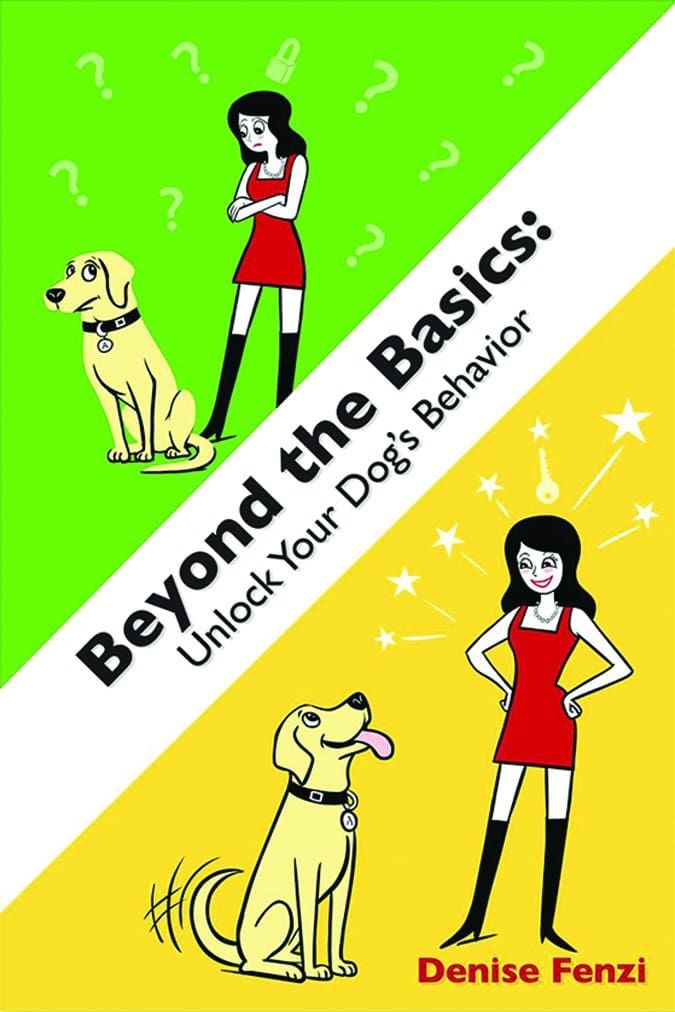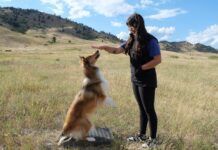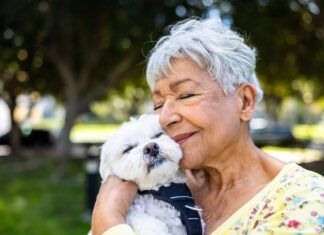How can we know what dogs are feeling? Obviously we cannot ask them, and since they have different body shapes, vocalizations, and expressions than humans, it’s not always obvious what might be taking place inside those furry little heads. Now what?
We have two basic strategies. First, we can become keen observers of dog body language and behavior. Second, we can ask ourselves this question: “If a two-year-old child were showing this behavior under similar circumstances, what emotions might I suspect were at play?” Let’s look at each of these in turn.
Dog body language can be quite difficult to read, so it’s important to consider the context when interpreting behavior. Not only do you need to consider the environment (for example, dogs will pant when they’re hot, but also when they’re stressed), you also need to look at all of the body parts together. Although many people attempt to correlate each type of movement with a specific emotion, the easier approach is simply to compare the overall pictures of a distressed dog to a happy dog.
Signs of Emotions in Dogs
Distress Signals
What does a distressed dog look like? Generally speaking, you’ll probably see a dog who pants when he’s not hot, avoids eye contact, keeps his head or body low, yawns when he’s not tired, licks his lips in the absence of food, shows the whites of his eyes, has large dilated pupils, tucks his tail between his legs, or holds it straight up and very stiff. Keep in mind that all stress signals also have a normal variant; a dog may lick his lips because he is stressed, but he may also lick his lips if he has just finished a meal! There is no reason to assume stress unless the context suggests it.
You can tell that your dog is becoming overwhelmed with stress if he freezes, runs away, or begins to fight back. All of these options are possible depending on the situation or the individual dog.
Some dogs respond to stress by becoming passive and quiet, with extreme stress causing a dog to freeze and stop moving. Anxious dogs may attempt to cling to their owners for support. Other dogs become frantic, excited, or start running around for no apparent reason at all. These dogs might rely on themselves to feel safe, scanning the environment obsessively, and showing an inability to relax and settle. Some especially fearful dogs will try to drive away something that they perceive as dangerous by barking or lunging. It doesn’t matter if it truly is dangerous or not. If your dog thinks it is, you need to take it seriously.
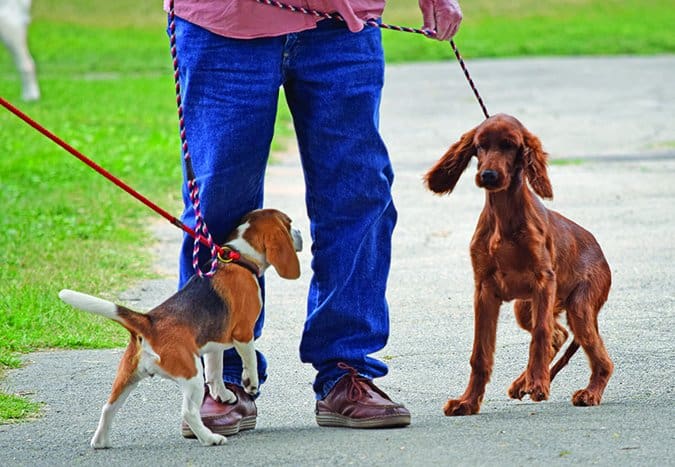
Do not attempt to make your dog “face his fears.” Minimizing and ignoring fear issues does not make them go away. When you either ignore fear or force your dog to face it in an effort to “prove” that something is not dangerous, you are heading down the wrong path. You can easily end up with total shut down or with defensive aggression.
Here’s a human example to make this more clear. Let’s say you’re afraid of mice. In an effort to help you adapt, your best friend “helpfully” locks you in a room with mice everywhere, crawling all over you. Maybe you start screaming. Maybe you lash out, trying to stomp on the mice. Maybe you become so overwhelmed with fear that you become catatonic.
Regardless of how you react, how do you think you would feel about the friend who put you in that situation? Would you trust her or want to spend time with her again? Probably not. Your dog is the same way. Don’t become the enemy.
Fearful behavior needs to be taken seriously and worked through thoughtfully and carefully. It can take hundreds – maybe even thousands – of pleasant and positive events to overcome the effects of one negative event. If you think your dog has more than a mild problem with fear, you need to contact a dog training behaviorist to help you. Learning from a book is fine for most training and for mild behavior problems, but if you’re dealing with more extreme behavior, you need professional help to guide you.
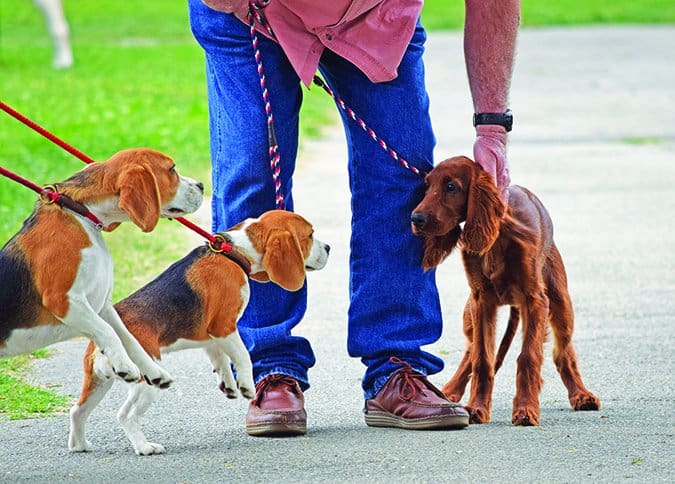
Anger
How about anger? Dogs experience anger for many of the same reasons that people do, usually because they have lost something they want, like food, toys, or attention. Rather than walking away and accepting that loss, they may try to get it back with threats.
You might see your dog growling, posturing stiffly, making hard eye contact, or – if all else fails – lunging, snapping, or even biting! Although most dog bites occur out of fear, the reality is that dogs can become angry and react badly as a result. In the same way that very fearful dogs require specialized professional help, if your dog shows strong aggression and a willingness to use physical force to “get his way,” then you need professional help, not a book. Contact a dog behaviorist to help you.
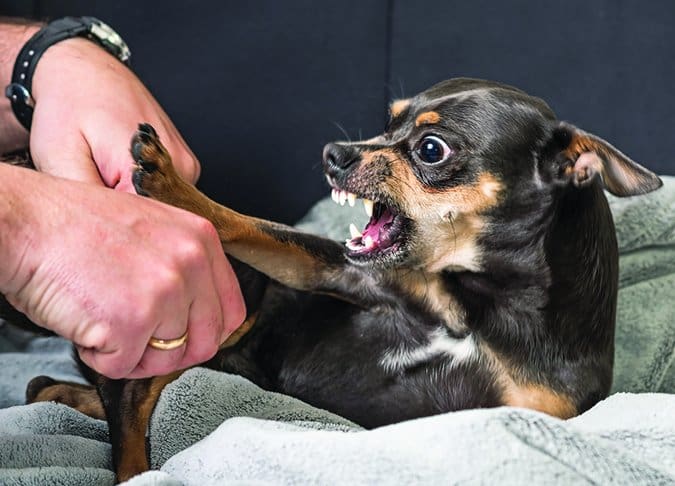
Happy Signals
So what do happy dogs look like? Happy dogs have open and relaxed body language. They tend to approach somewhat sideways, wiggling all over. Their tails wag fast and loose. Their eyes are open and bright; ears are forward and up or very relaxed; and their focus tends to shift easily from one interesting option to another. If you’re not sure how this looks, pay attention to your dog’s behavior when you come home after a brief absence and he’s cheerfully following you through the house.
Keep in mind that even happy emotions can be overwhelming, which might tinge your dog’s behavior with a frantic quality. For example, in that first minute after you get home, your dog might be happy to see you, but he might also be jumping on you, vocalizing, panting heavily, and showing wide eyes and dilated pupils. Or, he might simply run around, releasing his happy/frantic energy with movement. Or, his focus may be scattered leaping on you, and then running off to grab a toy, and then back to you!
Happy body language is always good but – and this is big – remember that if the dog is overwhelmed by his emotions, he will not be receptive to training until he is in a calmer state of mind. A “too happy and excited” dog is just as much at risk of showing problematic behavior as a “too scared or unhappy” dog.
One of the most useful indicators of happy or distressed body language is a solid understanding of what your dog normally looks like under a variety of circumstances. If you know what your dog looks like when the two of you are engaged in your dog’s favorite activity – like playing ball – then you know what one variant of happy looks like. If you have seen your dog when he was startled by a stranger on the street, then you know what fearful body language looks like.
All of this requires that you pay attention; take the time to observe your dog in your day to day life and you’ll be well ahead of the game.
Dogs are Toddlers
The second way to interpret your dog’s behavior is to imagine that he is a toddler. This requires combining what you see in the dog’s behavior with what you know of the context and then making some educated guesses.
Let’s say your dog is acting hyper. He has just been released from his crate after a long night’s sleep. He’s moving around a lot, chewing your things, and maybe even mouthing you. He grabs your shoes and runs off with them. If this was a toddler, what would you be thinking? Probably that he’s bored. So what’s the solution? Do something with him!
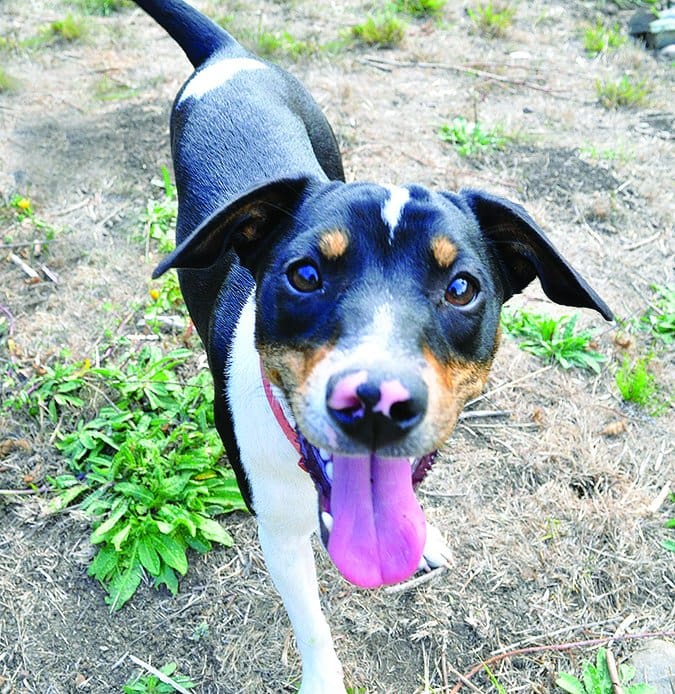
Now how about this: Your dog is acting hyper, but he’s been out all day, visiting people, playing ball at the park, and socializing with other dogs. He’s had dinner and now you want to watch TV but he can’t stop moving. He’s chewing on things, maybe even mouthing you! He grabs your shoes and runs off with them. If this was a toddler, what would you be thinking? That he’s tired! He’s had a busy day and now he needs to sleep. So what’s the solution? Put him to bed! He may complain in the crate for a couple of minutes, but if the issue really is exhaustion, he will soon fall asleep.
If you look only at behavior and emotion without context, it’s very likely that you’ll head down the wrong path. In one case, you have a bored dog, and in the other you have a tired dog; both are exhibiting the same problematic behavior but the appropriate solution requires knowledge of the context. If you ask yourself what the problem would be if your dog was a toddler, you may well find the solution.
Guessing the Wrong Emotions
In truth, we cannot know what a preverbal child or baby is thinking, but that doesn’t mean that we don’t try to understand what he needs! When your baby is crying, you try to find the most likely cause. Sometimes you’ll be right; you’ll be able to solve the problem and the crying will stop. Other times you’ll be wrong and you’ll have to try something else. It’s okay to be wrong; just keep looking for the answer! Humans as a species spend an enormous amount of time refining our social skills with each other, trying to understand the emotions and behaviors of others so that we can get along most effectively in the world. If you take this approach with your dog, you’ll reap enormous benefits.
Of course, sometimes you’ll set yourself up to guess wrong. Let’s say you just came home from a movie to find that your dog has peed on your bed, ripped up your favorite book, barked for an hour straight, and is now sound asleep in a happy puddle in the middle of the couch.
You look at this from a human point of view. Why would you pee on your best friend’s bed, scream nonstop, and rip up her stuff? You may conclude that your dog must be angry because you went out and had fun without him! He made a big mess for you to find when you came home in order to punish you before falling asleep, smugly dreaming about how he taught you a lesson. And herein lies the danger with anthropomorphism: You didn’t look at the situation from the point of an emotional two-year-old; you looked at it as an older child or as an adult! You attached your emotions, your anger at the destruction, to what you found when you got home. You assumed an emotion like spite, yet there is no evidence that dogs have anything like that. You gave him the emotions of an adult human, and he is far from that!
Dogs (and toddlers) are not thinking about what happened earlier; they are thinking about what is happening right now! They live in the moment. Dogs are not thinking about how you’ll feel when you come home and find the mess; they are simply reacting to whatever is happening right now, and whatever emotions come along with those events. Dogs do not think about what you did yesterday unless something you are doing right now reminds them of it (like when you’re getting the leash to take them for a walk in the neighborhood and yesterday that walk was scary).
Dogs do not plot revenge or try to figure out how to make you suffer. That’s a very complex thing to do! While there is very compelling evidence that dogs experience basic emotions like anger and joy, there is no scientific evidence that dogs feel more complex emotions like guilt or spite. While your dog might suffer if and when you punish her, it does not cause her to feel remorse over what has already happened.
So if you assume that your dog is acting with the intention of creating discomfort for you, then you are giving your dog credit for significantly more emotional abilities than he possesses. Dogs do not experience those emotions. Neither do two-year-olds. It’s a bad trap to start assuming that your dog is out to get you.
Remember, when you’re trying to use human motivations to guess what motivated a dog, use the motivations of a two-year-old. If you’re not familiar with two-year-olds, ditch that strategy entirely! Instead, just consider your dog as a creature who lives in the moment, with whatever is happening at that time.
YOUR DOG’S FEELINGS: OVERVIEW
1. Keep in mind that dogs experience a range of emotions in much the same way as a two-year-old child, and that the impact of those emotions can be responsible for problematic behavior and prevent you from creating any meaningful change.
2. Consider your dog’s behavior and body language within the context of the circumstances before you try to solve a problem.
3. Learn to understand your dog’s emotions. If you do, you’re much more likely to be successful at creating a training plan that works – and odds are pretty good that your dog will have a lot more fun with you, too!
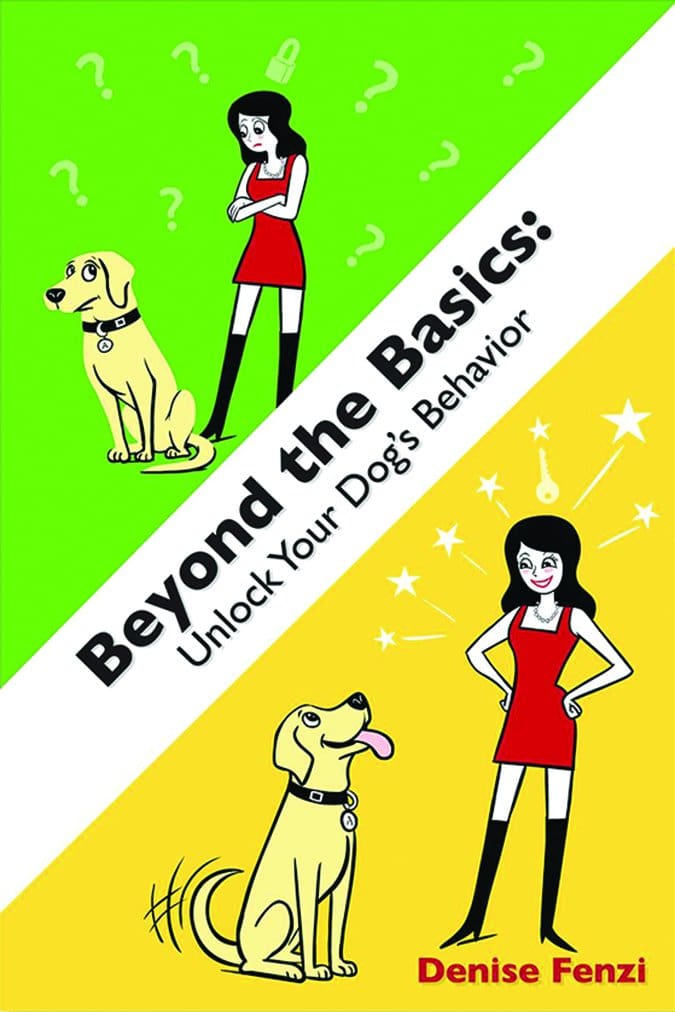
Editor’s Note
Denise Fenzi is the founder and head trainer at the Fenzi Dog Sports Academy, an online school dedicated to providing high-quality instruction for competitive dog sports. Last month, we published the first half of the first chapter of Fenzi’s newest book that is aimed exclusively at pet dog owners and pet dog trainers; this excerpt is the second half of the first chapter. If you are interested in purchasing this or any other of Fenzi’s books, visit her website.
Denise Fenzi is the founder of Fenzi Dog Sports Academy.


